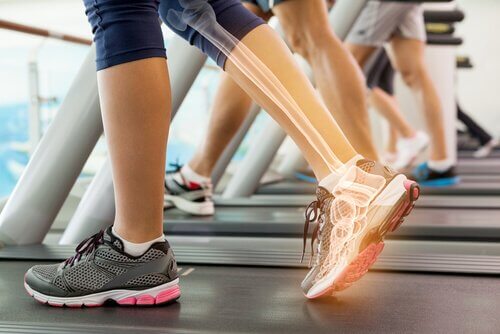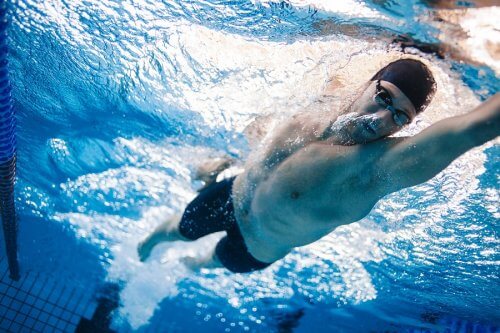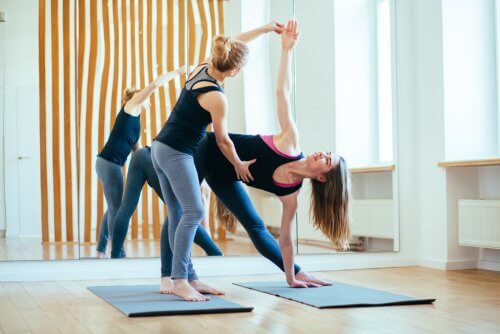5 Exercises that Won't Affect your Joints

Suffering from knee problems shouldn’t keep you from doing periodic physical activity. Although some activities can affect your joints, there are several exercises that won’t affect your joints.
In many cases, joint damage is the result of someone not executing the right techniques. That’s why it’s important to talk to a sports specialist who can help you through the process if you have any questions about your exercises.
Joint Health

According to the Arthritis Foundation, every 10 pounds of extra weight exerts an extra 40 pounds of pressure on the knees.
“It’s important for the population to know that obesity is not only an aesthetic problem. In addition, it also contributes to musculoskeletal health problems,” say s Stuart D. Miller, an orthopedic surgeon at the Union Memorial Hospital in Baltimore.
In addition, obesity leads to other health problems including:
- Increased blood pressure.
- High cholesterol levels.
- Heart failure.
- Increase in blood sugar and diabetes.
- Fatty liver.
- Arthritis.
That’s why having knee issues shouldn’t keep you from exercising. Instead, it should be encouraging you to. When it comes to exercising, you can perform low-impact exercises that take care of your health without affecting your joints.
Why You Should Choose Exercises that Won’t Affect Your Joints
Low-impact exercises that won’t affect your joints use smaller, controlled movements. This decreases the pressure on the joints, which are the parts of our bodies that suffer the most when we exercise regularly when we do activities like running, jumping, playing soccer, tennis, basketball or any other high-impact activity.
However, that doesn’t mean that these exercises don’t burn fat and they won’t make you sweat. On the contrary, some of them can test your muscular and cardiovascular capacity.
5 Exercises that Won’t Affect Your Joints
1. Swimming

Swimming is one of the most full-body sports and is also one of the most joint-friendly activities. This is because water reduces the pressure on the body by supporting its weight and cushioning any impact.
Swimming incorporates cardio-aerobic exercise with muscle and flexibility requirements. Any style of swimming, from freestyle to the butterfly, requires the movements of the upper and lower muscles.
Swimming exercises more major muscles of the body than any other type of cardio exercise.
- It’s estimated that a continuous half-hour of swimming can burn between 220 and 270 calories. Therefore, it’s an ideal sport for fat burning and toning your body.
Discover: Five Surprising Psychological Benefits of Swimming
2. Aqua Fitness: A Low-Impact Exercise that Won’t Affect Your Joints
If you don’t like to swim, aqua fitness is an aerobic endurance exercise that’s done standing in a pool. It’s usually run by an instructor.
Aqua fitness exercises are similar to those of a normal aerobics class. However, by adding water, your endurance increases while the impact decreases.
Walking in the water requires more effort and, therefore, burns more calories than doing it normally. In Aqua Fitness, the body looks for energy in fat stores, rather than in carbohydrates, as it does in high-intensity exercises.
- According to the National Institute of Health of the United States, one hour of Aqua Fitness burns approximately 520 calories.
3. Rowing

This is another low-impact exercise that will keep your knees protected and give you a great workout. Paddling requires all parts of the body, from the arms to the legs, and especially the pectoral and abdominal muscles.
You don’t need to live near a lake or a river and you don’t even need to have a kayak to paddle. In fact, you can go to any gym and just use their rowing machines. These machines allow you to regulate the resistance according to your capacity and you can do different intervals with rest.
- A half-hour of rowing at a moderate pace can burn between 260 and 300 calories.
4. Elliptical machine
If you’ve ever been in the gym, you’ve definitely seen these walking machines composed of two feet platforms and two handles. It’s called an elliptical. This machine allows you to get a complete and demanding cardiovascular exercise with a low impact.
The internal pulleys of this device cushion the impact of each step and, at the same time, force the arms to move while the legs are moving. This increases the intensity and energy expenditure.
The elliptical mainly works the muscles of the legs, buttocks, abdominals and in the upper part of the biceps, triceps, and pectorals.
- One hour of exercise with the elliptical at medium intensity can burn between 550 and 650 calories.
5. Yoga

Yoga is generally associated with relaxation and stretching postures that require flexibility, but not with fat burning. However, some types of yoga require high energy expenditure, so they can help you lose weight.
- Ashtanga Yoga- This is a continuous sequence of postures that work both resistance and flexibility in coordination with breathing. While exercising the body with intensity, it still maintains other benefits of yoga, such as stress release, relaxation, and spiritual connection.
- A one hour class of Ashtanga yoga burns between 320 and 400 calories
- Bikram Yoga- This type of yoga is practiced in a room with temperatures that reach up to 104 degrees, so participants sweat a lot. This modality is based on a routine of 26 postures always in the same sequence. It’s specially designed to strengthen muscles and eliminate toxins.
- Although sweating isn’t related to weight loss, you can shed up to 600 calories in one session of Bikram Yoga.
- Power Yoga- This is similar to Ashtanga Yoga but is more vigorous, even some purists consider it to be more gymnastics than yoga. Like Ashtanga, power yoga requires continuous postures. However, they’re more sustained and require greater strength.
- This yoga modality, due to its requirements, helps burn between 300 and 400 calories in a one-hour session.
As you can see, having knee pain doesn’t have to prevent you from staying in shape and burning fat. However, if you feel any discomfort, it’s best to talk to your doctor about which exercises will be most suitable for you.
All cited sources were thoroughly reviewed by our team to ensure their quality, reliability, currency, and validity. The bibliography of this article was considered reliable and of academic or scientific accuracy.
- Efecto de la grasa en la artritis. Arthritis Foundation. https://espanol.arthritis.org/espanol/la-artritis/enfermedades-relacionadas/obesidad-artritis/efecto-grasa-artritis/
- Why weight matters when it comes to joint pain. Harvard Health Publishing. https://www.health.harvard.edu/pain/why-weight-matters-when-it-comes-to-joint-pain
- Easy exercises. National Health Services. https://www.nhs.uk/live-well/exercise/easy-low-impact-exercises/
- Obesity, Weight Loss, and Progression of Disability in Rheumatoid Arthritis. Joshua F. Baker, Bryant R. England, Ted R. Mikuls, Harlan Sayles, Grant W. Cannon, Brian C. Sauer, Michael D. George, Liron Caplan, and Kaleb Michaud. Arthritis Care & Research; (2018) DOI: 10.100/acr.23579.
This text is provided for informational purposes only and does not replace consultation with a professional. If in doubt, consult your specialist.








